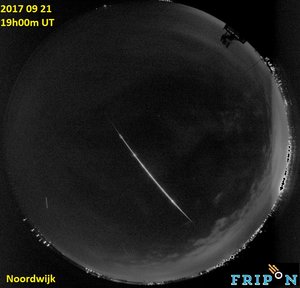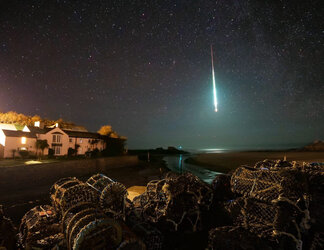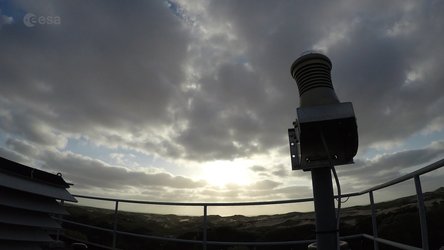Accept all cookies Accept only essential cookies See our Cookie Notice

About ESA
The European Space Agency (ESA) is Europe’s gateway to space. Its mission is to shape the development of Europe’s space capability and ensure that investment in space continues to deliver benefits to the citizens of Europe and the world.
Highlights
ESA - United space in Europe
This is ESA ESA facts Member States & Cooperating States Funding Director General Top management For Member State Delegations European vision European Space Policy ESA & EU Space Councils Responsibility & Sustainability Annual Report Calendar of meetings Corporate newsEstablishments & sites
ESA Headquarters ESA ESTEC ESA ESOC ESA ESRIN ESA EAC ESA ESAC Europe's Spaceport ESA ESEC ESA ECSAT Brussels Office Washington OfficeWorking with ESA
Business with ESA ESA Commercialisation Gateway Law at ESA Careers Cyber resilience at ESA IT at ESA Newsroom Partnerships Merchandising Licence Education Open Space Innovation Platform Integrity and Reporting Administrative Tribunal Health and SafetyMore about ESA
History ESA Historical Archives Exhibitions Publications Art & Culture ESA Merchandise Kids Diversity ESA Brand Centre ESA ChampionsLatest
Space in Member States
Find out more about space activities in our 23 Member States, and understand how ESA works together with their national agencies, institutions and organisations.
Science & Exploration
Exploring our Solar System and unlocking the secrets of the Universe
Go to topicAstronauts
Missions
Juice Euclid Webb Solar Orbiter BepiColombo Gaia ExoMars Cheops Exoplanet missions More missionsActivities
International Space Station Orion service module Gateway Concordia Caves & Pangaea BenefitsLatest
Space Safety
Protecting life and infrastructure on Earth and in orbit
Go to topicAsteroids
Asteroids and Planetary Defence Asteroid danger explained Flyeye telescope: asteroid detection Hera mission: asteroid deflection Near-Earth Object Coordination CentreSpace junk
About space debris Space debris by the numbers Space Environment Report In space refuelling, refurbishing and removingSafety from space
Clean Space ecodesign Zero Debris Technologies Space for Earth Supporting Sustainable DevelopmentLatest
Applications
Using space to benefit citizens and meet future challenges on Earth
Go to topicObserving the Earth
Observing the Earth Future EO Copernicus Meteorology Space for our climate Satellite missionsCommercialisation
ESA Commercialisation Gateway Open Space Innovation Platform Business Incubation ESA Space SolutionsLatest
Enabling & Support
Making space accessible and developing the technologies for the future
Go to topicBuilding missions
Space Engineering and Technology Test centre Laboratories Concurrent Design Facility Preparing for the future Shaping the Future Discovery and Preparation Advanced Concepts TeamSpace transportation
Space Transportation Ariane Vega Space Rider Future space transportation Boost! Europe's Spaceport Launches from Europe's Spaceport from 2012Latest

Shooting star
Thank you for liking
You have already liked this page, you can only like it once!
A bright fireball was spotted over the Netherlands and Belgium on 21 September at 21:00 CEST (19:00 GMT).
It was caused by a small meteoroid, estimated to be around several centimetres, entering Earth’s atmosphere and burning up.
The fireball was captured by a number of all-sky camera stations of the Dutch–Belgian meteor network operated by amateurs of the Dutch Meteor Society and the Meteor Section of the Royal Netherlands Association for Meteorology and Astronomy. They use automated photographic cameras with fish-eye lenses to capture images of the night sky on clear nights.
This remarkable image was captured by one of the stations, at Ermelo, operated by Koen Miskotte.
It is a 1.5 minute exposure with a Canon EOS 6D DSLR and a fish-eye lens.
The camera lens was equipped with an LCD shutter that, during the exposure, creates brief ‘breaks’ at a rate of 14 per second. These are the dark gaps in the trail making it look dashed. Because the LCD shutter rate is known, you can count the dashes and obtain the duration of the fireball: 5.3 seconds.
The image also provides information on the deceleration of the meteoroid in the atmosphere. In this case, it entered the atmosphere at 31 km/s and had slowed to 23 km/s by the time it disappeared (because it had burnt up completely) at 53 km altitude.
The bright star trail just below the tip of the fireball is Arcturus. The Big Dipper can be seen at right, above the treeline. The bright star near the centre of the image just left of the fireball trail is Vega.
Read full details on this brief but fiery event via Marco Langbroek’s SatTrackCam blog.
More information
-
CREDIT
K. Miskotte -
LICENCE
ESA Standard Licence

Fireball over the Netherlands

Cosmic caller goes out with a bang

Fireball over the Netherlands

Autumn fireball















 Germany
Germany
 Austria
Austria
 Belgium
Belgium
 Denmark
Denmark
 Spain
Spain
 Estonia
Estonia
 Finland
Finland
 France
France
 Greece
Greece
 Hungary
Hungary
 Ireland
Ireland
 Italy
Italy
 Luxembourg
Luxembourg
 Norway
Norway
 The Netherlands
The Netherlands
 Poland
Poland
 Portugal
Portugal
 Czechia
Czechia
 Romania
Romania
 United Kingdom
United Kingdom
 Slovenia
Slovenia
 Sweden
Sweden
 Switzerland
Switzerland
























